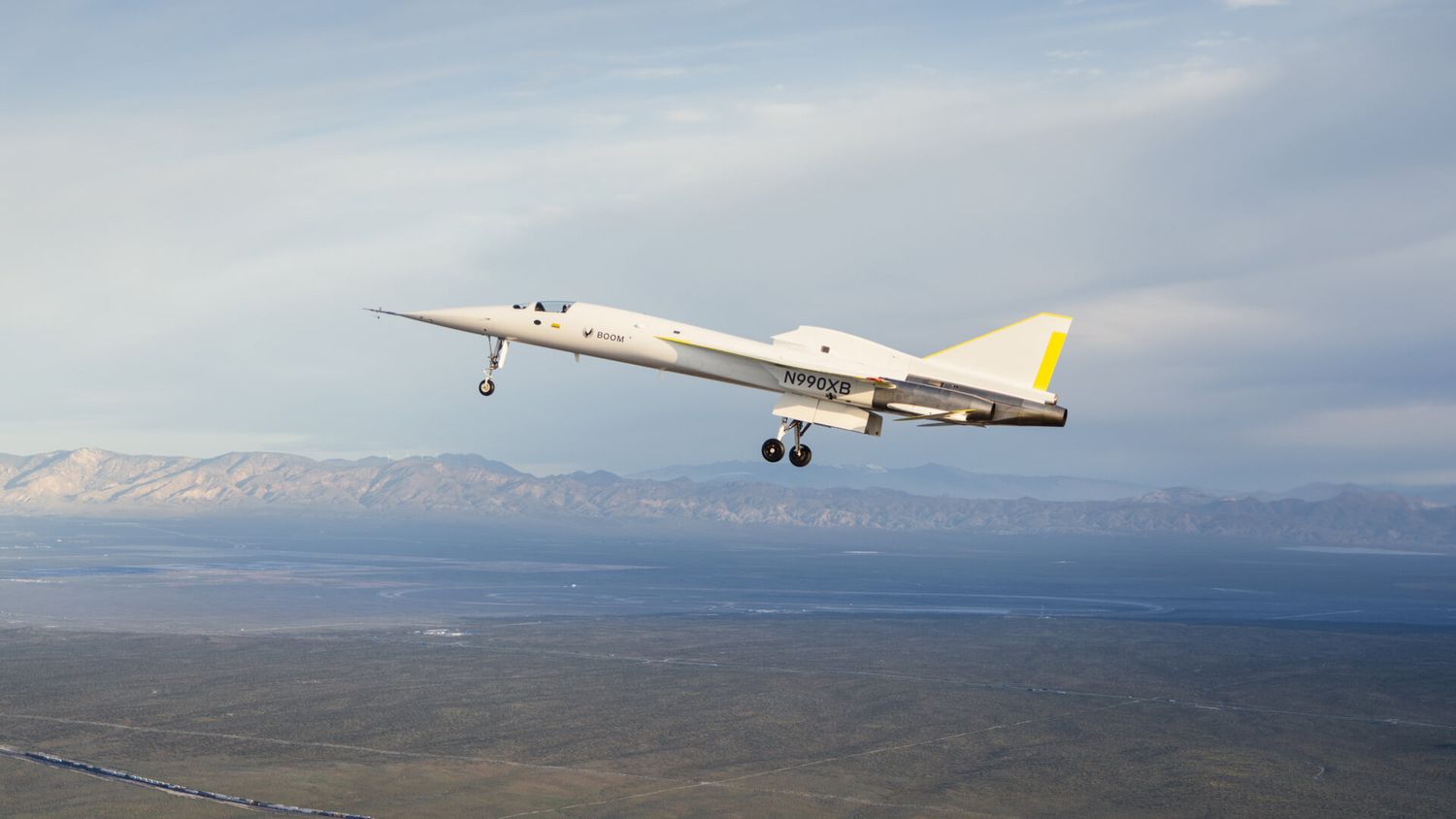New era: Boom Supersonic makes the first successful flight of the XB-1 demonstrator
Boom Supersonic has successfully completed the first flight of the XB-1, the world’s first independently developed passenger supersonic aircraft. This historic milestone took place at the Mojave Air & Space Port in Mojave, California.
The XB-1, the initial prototype of the Overture, has been built with state-of-the-art technology to ensure efficient flights. The aircraft is constructed with composite materials of carbon fiber, advanced avionics, digitally optimized aerodynamics, and an advanced supersonic propulsion system.
Blake Scholl, founder and CEO of Boom Supersonic, stated: «Today, the XB-1 has taken off in the same sacred airspace where the Bell X-1 first broke the sound barrier in 1947.»
«I have been awaiting this flight since I founded Boom in 2014, and it marks the most significant milestone yet on our journey to bring supersonic travel to passengers worldwide,» added Scholl.
The pilot in command of the XB-1 was the chief test pilot of Boom, Bill «Doc» Shoemaker. Additionally, the aircraft was escorted by a Northrop T-38 Talon commanded by test pilot Tristan «Geppetto» Brandenburg, who closely supervised the maiden flight.
The airspace utilized by the XB-1 has witnessed the flight of numerous aircraft that have contributed to the great history of aviation, including the Bell X-1 (the first aircraft to break the sound barrier), the North American X-15, and the Lockheed SR-71 Blackbird.
The XB-1 successfully achieved all its test objectives, reaching an altitude of 7,120 feet and speeds of up to 238 knots.
Bill «Doc» Shoemaker expressed that «all members of the XB-1 team should be incredibly proud of this achievement. It has been a privilege to share this journey with so many dedicated and talented professionals.»
«The experience we have gained in reaching this milestone will be invaluable for the revival of Boom’s supersonic travel,» Shoemaker added.
20 Years after the Concorde
The XB-1 becomes the first civilian supersonic aircraft to fly after the retirement of the Concorde. This prototype lays the groundwork for the design and development of the Overture, establishing a culture where safety is paramount in engineering and manufacturing.
The prototype’s mission is to validate and certify fundamental technologies and innovations for the development of future civilian supersonic aircraft, including:
- Augmented Reality Vision System: Two cameras mounted on the nose, digitally augmented with attitude and flight path indications, feed a high-resolution display for the pilot, providing excellent visibility of the runway. This system enhances aerodynamic efficiency without the weight and complexity of a movable nose.
- Digitally Optimized Aerodynamics: Engineers used computational fluid dynamics simulations to explore thousands of designs for the XB-1. The result is an optimized design that combines safe and stable operation during takeoff and landing with efficiency at supersonic speeds.
- Carbon Fiber Composites: The XB-1 is manufactured almost entirely with carbon fiber composite materials, allowing for a sophisticated aerodynamic design in a strong and lightweight structure.
- Supersonic Inlets: The XB-1’s engine inlets decelerate supersonic airflow to subsonic speeds, effectively converting kinetic energy into pressure energy, allowing conventional jet engines to propel the XB-1 from takeoff to supersonic flight.
Paving the Way for Overture
Overture continues to advance toward production, with a growing global network of top-tier suppliers and an order book including 130 orders and pre-orders from American Airlines, United Airlines, and Japan Airlines.
The aircraft will be able to transport between 64 and 80 passengers at Mach 1.7, approximately twice the speed of current subsonic aircraft. Optimized to offer speed, safety, and sustainability, Overture is designed to operate with up to 100% sustainable aviation fuel (SAF).


Comentarios
Para comentar, debés estar registrado
Por favor, iniciá sesión